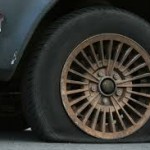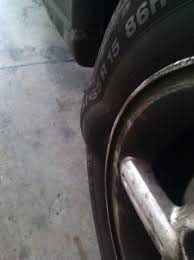Tire Bubble – What is It?
 Have you seen a bubble on a car tire before? The local tire shop told my neighbor that she had a bubble on her tire and she did not understand what they were talking about or how it could have happened in the first place.
Have you seen a bubble on a car tire before? The local tire shop told my neighbor that she had a bubble on her tire and she did not understand what they were talking about or how it could have happened in the first place.
Basically a bubble forms on the tire due to an internal defect or damage to the tread and the belts that make up the tread. This can happen because the tire is defective and there was a problem during manufacturing, but they can also be caused by stress due to hitting a large pot hole or a curb. The tire itself has weakened and the tire should be replaced due to safety reasons.
You might have road hazard protection when you purchased the tires and it should be covered under that option. If you do not have replacement coverage and you did not hit a curb or a large pot hole you might still argue with the tire retailer that the tire is defective. I did this with a local brand name tire store in my area and they agreed with me that they have seen a few issues with that brand of tire and replaced it for free without road hazard warranty.
Balancing or rotating the tire will NOT correct the issue. The tire is damaged (beyond repair) and is a safety concern and you should NOT continue to drive with a bubble on it.
The picture below shows a bubble on the sidewall, which is really dangerous because the sidewall of the tire is not as strong as the center tread part and will burst much easier. But, you can also have a bubble in the middle tread section of the tire, and sometimes it can be hard to spot.
Take your hand, palm side down and feel the tread part of the tire, move your hand side to side and all over the top of the tread to see if you can feel a high spot. The bubble will feel raised, higher than the rest of the tire tread. If you feel that I would replace the tire, it will only get worse as it comes in contact with the road surface more than the rest of the tread.
A bubble in the center tread part can be felt as you drive. Drive slowly, say 10 miles an hour or less just to get the car moving. If you feel like your seat is moving up and down in a rhythmic pattern (once, as the tire hits the high spot on the rotation) then it will need to be replaced.
Here is a short video about other types of tire wear patterns, how they happen and what can you do to prevent and repair them.
Hope this helps, please share and like!
Austin Davis

